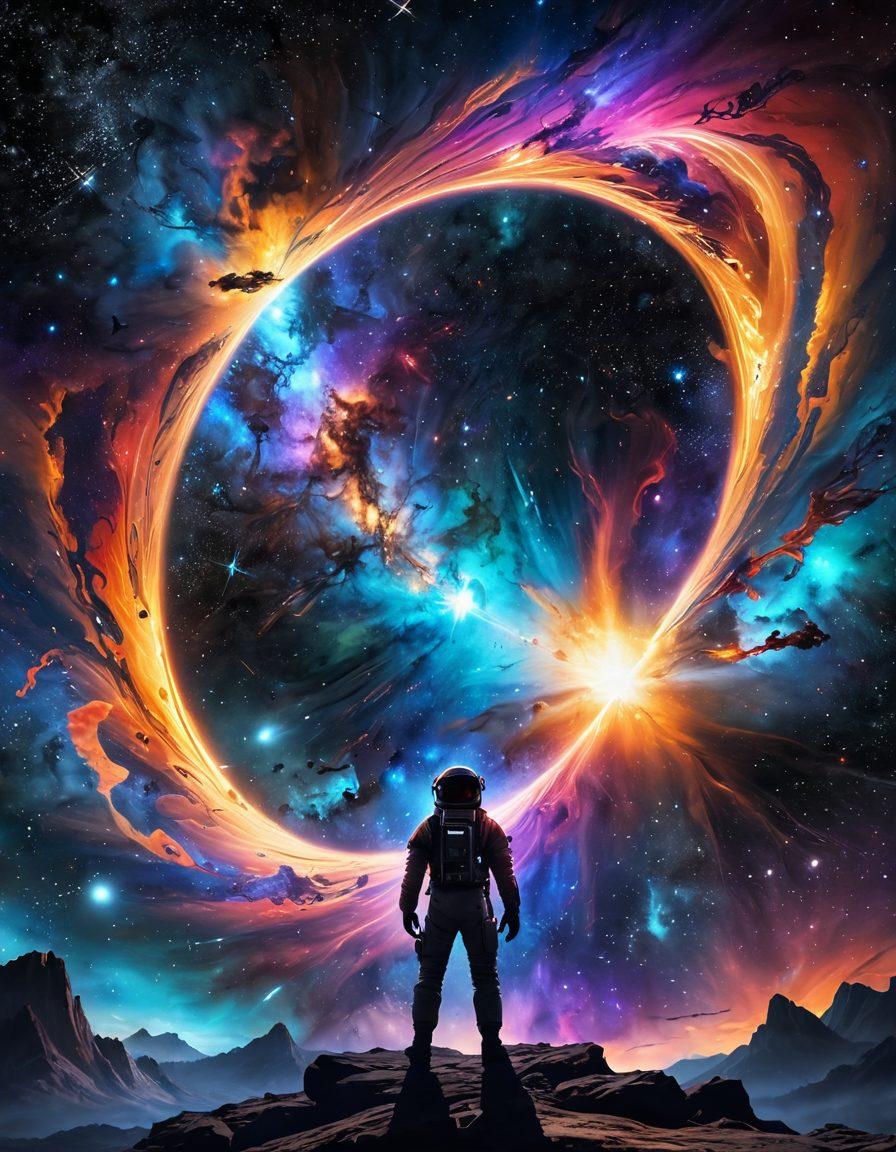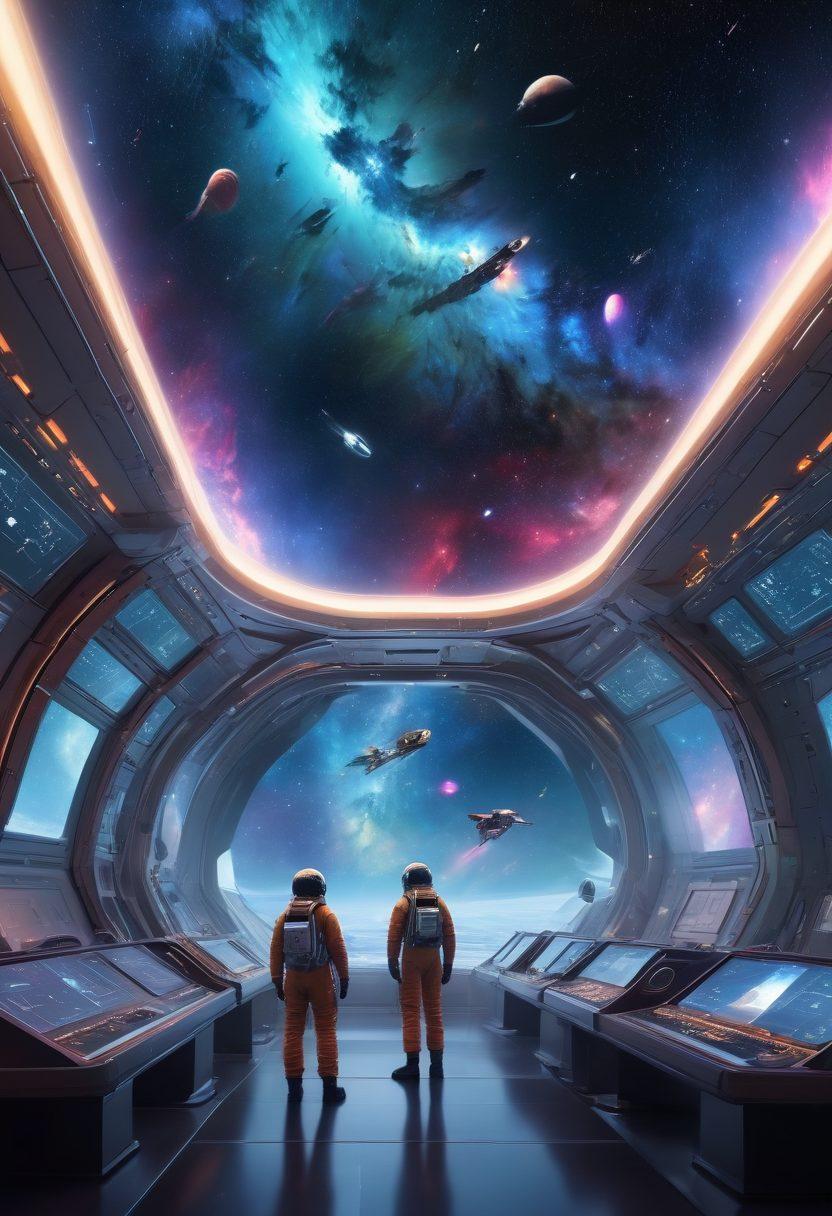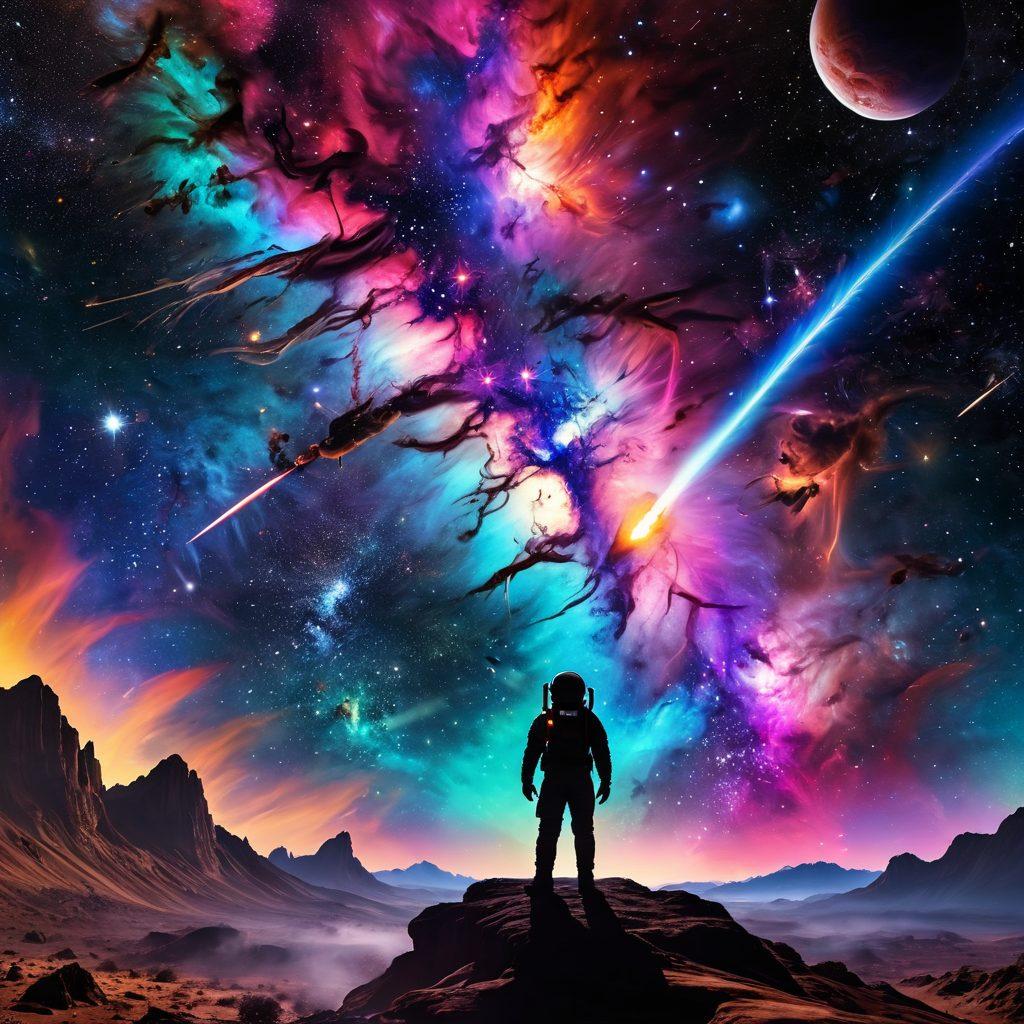Exploring the Cosmos: Unveiling the Secrets of Stellar Phenomena and Interstellar Travel
Have you ever gazed up at the night sky, feeling a profound sense of wonder as you ponder the mysteries of the cosmos? There’s a whole universe out there, filled with celestial bodies that tell stories of creation, destruction, and the unyielding push toward discovery. For those of us captivated by space science, stellar phenomena are not just distant lights; they embody the key to understanding our place in the universe. In this blog, we’ll embark on a journey through the stars, shedding light on these cosmic events and their pivotal role in space exploration.
Imagine the dazzling display of a supernova, a star exploding in a brilliant burst of energy that can outshine entire galaxies. These stellar phenomena are not mere entertainment for fans of sci-fi novels; they are astronomical discoveries that help astrobiologists and galactic researchers understand the life cycles of stars, the birth of planets, and even the potential for life beyond Earth. How incredible is it that each twinkling dot you see in the night sky might be shedding light on the impossible—interstellar travel?
As we dive deeper into cosmos exploration, we come across the concept of space-time—a mind-bending frontier where time and space intertwine. The more we learn, the more questions arise. What if we could manipulate space-time to enable space travel that spans galaxies? How do phenomena like black holes reshape our understanding of the universe? These questions lead us into a realm where space science fiction starts to seem less fictional and more like future possibilities for humanity. After all, if a mere spark from a stellar explosion has the potential to light the path for our future, what other secrets lie waiting to be uncovered?
Every astronomical discovery urges us to look beyond our earthly troubles and focus on the big picture. What role do these cosmic events play in our daily lives? For aspiring scientists and space enthusiasts, understanding stellar evolution is crucial, as it showcases not just the lifespan of stars but also the very origins of our elements—carbon, oxygen, and more—that make life possible. So, why not use this knowledge as a stepping stone toward inspiring future space missions? And more importantly, how do we prepare ourselves for these adventure-filled endeavors into the great unknown?
Ultimately, the journey through the stars hinges on continuous research and advancements in astronomy and intergalactic travel technology. Every blog post, every research paper contributes to our collective understanding, and every new launch paves the way for the next generation of space explorers. So, let us keep our curiosity alive, for within the vastness of outer space, “there are more things in heaven and earth, Horatio, than are dreamt of in your philosophy.” Join the conversation on this exciting frontier of space exploration—together, we can unveil the secrets of stellar phenomena and reignite our passion for the wonders waiting to be discovered.
The Future of Interstellar Travel: How Galactic Research is Shaping Space Science
When we gaze up at the starry night sky, we are often reminded of dreams that lie just beyond our reach. What if, one day, we could drift between the stars, experiencing a sense of wonder akin to the compelling narratives found in our beloved sci-fi novels? The thrilling prospect of interstellar travel is rapidly evolving from mere fantasy to tangible reality, propelled by groundbreaking galactic research and astronomical discoveries. As we begin unraveling the secrets of the cosmos, one can’t help but wonder: what will our future in outer space look like?
In the quest for cosmic exploration, scientists are peering into the depths of interstellar travel and asking the all-important questions: How do we transcend the barriers of our own solar system? Recent advances in space science have sparked imaginations worldwide - drive systems like solar sails, warp drives, and even theoretical concepts such as wormholes are fostering discussions among researchers, engineers, and astronomy enthusiasts alike. These discoveries are more than just the stuff of dreams; they are laying the groundwork for viable space missions that could one day see us traveling to celestial bodies outside our reach.
Through this journey into the unknown, we are witnessing the intricacies of stellar phenomena and the evolution of our understanding of space-time. Intergalactic exploration holds the promise of revealing cosmic events and celestial bodies that challenge everything we've learned about our universe. The future may hold a magnificent tapestry of very real events akin to the pages of our favorite science fiction tales. With every piece of research that emerges, we inch closer to understanding what it means to be explorers of an infinite cosmos.
What fuels this curiosity that drives galactic research and its endeavors? One might argue it’s our innate desire to answer the age-old question of whether we are alone in the universe or if perhaps, there are other beings grappling with the same dreams of interstellar travel. Astrobiology, the study of life beyond Earth, is rapidly advancing, seeking to uncover the biochemistry of cosmic life forms. Imagine the possibilities: could we connect with other civilizations? The very thought is dramatic and exceptionally thrilling, a notion which fuels both scientific rigor and imaginative storytelling across the artistic spectrum.
The realm of space exploration is indeed vast, and although we may feel small in the grand scheme of the universe, we are poised on the brink of extraordinary discoveries. The advancements in astronomy aren’t just reshaping our understanding of the cosmos but are also inspiring countless individuals to dive into the world of space science. Each new insight opens doors to participation in a collective journey. By embracing the fusion of science and storytelling in our blogging ventures, we not only celebrate the wonders of interstellar travel but also ignite the curiosity of future generations, ensuring that the mysteries of the universe shall continue to inspire for years to come.
From Sci-Fi to Reality: Unraveling the Mysteries of the Cosmos and Celestial Bodies
Have you ever gazed at the night sky and wondered what lies beyond our little blue planet? The cosmos has fascinated humanity for centuries, stirring dreams of interstellar travel and the promise of astronomical discoveries. From sci-fi novels that populate our bookshelves to groundbreaking space missions that push the boundaries of space science, the quest to explore the universe is both timeless and urgent. Join me as we embark on a thrilling journey, unraveling the mysteries of the cosmos and celestial bodies that adorn the night sky, while contemplating how these wonders continue to inspire us today and fuel our imaginations.
The exciting concept of space exploration doesn't just belong to the realm of science fiction. It's a dream taking flight with the technological advancements of our time. Can you recall the exhilarating moment when humanity took its first steps on the moon? Or more recently, when we sent rovers scuttling across the Martian surface, searching for signs of life? Each mission and celestial event adds a new chapter to humanity's understanding of stellar phenomena and space-time. As we transition from the pages of novels to the reality of intergalactic exploration, one question remains: how will these cosmic adventures shape our future?
Imagine standing on a distant planet, surrounded by an alien landscape, experiencing moments that were once the stuff of dreams. Interstellar travel may have seemed like an impossible feat, but today’s space science is rapidly closing the gap between fiction and reality. With ongoing galactic research focused on warp drives and stable wormholes, the idea of crossing astronomical distances could soon shift from a distant aspiration to a tangible possibility. The excitement builds when we consider what we might find beyond our solar system; could we encounter alien civilizations or new forms of life in the field of astrobiology?
While the cosmos continues to expand, so does our understanding of stellar evolution and cosmic events. Each discovery sheds light on the birth and death of stars, the formation of galaxies, and the catastrophic phenomena that occur in our universe. The beauty of these revelations is that they resonate with us on a personal level. We see ourselves mirrored in the universe's journey, where every ending brings forth a new beginning. Our existence feels intertwined with these cosmic stories. Have you ever wondered what an end to one star’s life might mean for the birth of another?
As we reach for the stars through our quest for knowledge, the questions of our existence linger. Are we alone in the universe? What secrets do distant celestial bodies hold? With each advancement in space travel, we inch closer to unraveling the mysteries of our cosmos. This ongoing journey encourages us to dream bigger and strive for more, as we continue to unearth the complexities of intergalactic realms. So, the next time you look up at the night sky, remember: the stories of the cosmos are not just distant tales; they’re waiting for the curious and the brave to be rewritten.


